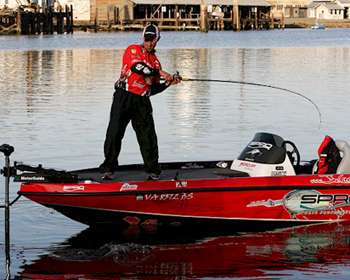
Everyone who has ever fished for bass in, or around, heavy cover has a story about hooking a nice fish that they were unable to land because it became mired in the cover they were fishing. While each angler's story may be unique to the particular body of water and structure, the story generally ends in the same fashion — a lost opportunity.
If you've yet to experience the frustration of having a hooked bass become entangled in shoreline cover, then you haven't been fishing for very long or you're not putting your bait in areas where bass often take up residence. In either event, Elite Series pro John Crews knows the story well as he's had it happen too many times to count.
To combat this scenario from becoming too redundant, however, he's developed a trick or two. "To be honest, if you don't have that happen every once in a while you're just not fishing in the right places," says the 2010 Duel in the Delta winner. "The biggest mistake I see weekend anglers make is waiting too long to set the hook."
By allowing time between sensing a bass' bite and the hook set, Crews points out that many times a bass will have already "wrapped" the angler's line into a pretzel. "In just a split second, a bass can pick up your bait and move way back into the bushes," he explains. "If you set the hook as soon as you feel a bite, you're going to stand a lot better chance of getting that fish away from whatever kind of cover you're fishing."
It's often inevitable that a bass will wrap itself around a dock piling or wayward stick-up. When this happens, Crews recommends keeping pressure on the line. "By keeping steady pressure, but not too much, a lot of times the bass will unwrap itself," he points out.
"If you're just absolutely bowing up the rod with pressure, the bass won't know which way to swim. By applying gentle pressure, that bass will take the path of least resistance and unwrap itself 90 percent of the time."
Once the bass has freed itself from the first obstacle, Crews points out that the fight is all but over. "If you're fishing around a dock and the bass has wrapped around a piling, just because they're free from the first one doesn't mean they won't try and swim to the next [piling] or cross member," he says.
It's for that reason that Crews will allow the fish to unwrap and immediately begin pulling the fish toward his boat. "Once that fish is freed, I'm going to move him toward open water as quickly as possible," he says, pointing out that in some cases that might require use of his trolling motor.
"As soon as I get the bass swimming away from the cover, I'm going to get it out to open water by whatever means possible. Sometimes, that might mean kicking on the trolling motor to aid my reeling efforts."
Get the fish away from cover — that's rule No. 2 for Crews. "Especially if it's a big fish, I don't want to have to worry about him wrapping up," he says. "If you can get him away from cover on the initial hook set, and heading toward open water, you've more than doubled your chances at landing him."
Finally, Crews cautions anglers to fight the urge to try and retrieve a bass that's become tangled in cover. "I've seen it happen too many times — you start heading toward the bass and there's enough slack in the line as a result that they come unbuttoned," he explains. "It's almost impossible to reel fast enough to keep up with the slack as you're heading toward a bass. I've had bass stay on for two to three minutes before they finally swam off the cover, so as long as I can still feel the fish surging, I'm not going to move in to manually free it up."
(Provided by Z3 Media)




